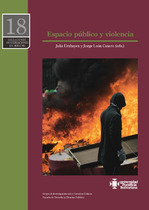| dc.contributor.author | García Vázquez, Carlos | |
| dc.date.accessioned | 2021-06-16T16:32:18Z | |
| dc.date.available | 2021-06-16T16:32:18Z | |
| dc.date.issued | 2020 | |
| dc.identifier.isbn | 978-958-764-868-3 (versión digital) | |
| dc.identifier.uri | http://hdl.handle.net/20.500.11912/8706 | |
| dc.description | 9 páginas | spa |
| dc.description.abstract | This article shows how the radical transformation experienced by the labor market in recent decades has
installed a logic of inequality in the contemporary city. The social decline of these cities has ceased to be an indication of decay becoming, instead, a complement to development, making late capitalism one of the most perverse phases of the Western economic system. Its perversion becomes evident in the social polarization that it promotes, in the ultrafragmentation from a social and ethnic standpoint, as well as
in the increase of conflicts in contemporary cities.
These aspects foster the so-called “topography of fear” which exposes the coming-into-crisis of the classic
vision of the city’s three principles –the end of continuity, the end of public space and the end of urban planning. The article shows how these phenomena are especially visible in the North American metropolis, in which the late-capitalist deregulation of urbanism is massively applied, promoting a spectacle-architecture. Spectacle-cities resemble a collection of works of art where style issues that define wastebaskets, pavements, street lamps and newsstands are becoming more important than social considerations. Hence, not only has the concept of “city” itself come into crisis –inasmuch as the West has been conceiving it for more than two thousand years– but also the concept of “citizen”. | spa |
| dc.format.mimetype | application/pdf | |
| dc.language.iso | spa | |
| dc.publisher | Universidad Pontificia Bolivariana | spa |
| dc.rights | Attribution-NonCommercial-NoDerivatives 4.0 International | * |
| dc.rights.uri | http://creativecommons.org/licenses/by-nc-nd/4.0/ | * |
| dc.subject | Espacio público – Violencia | spa |
| dc.subject | Urbanismo | spa |
| dc.subject | Violencia urbana | spa |
| dc.title | El fin de la continuidad, el fin del espacio público, el fin del urbanismo | spa |
| dc.title.alternative | Espacio público y violencia | spa |
| dc.type | bookPart | spa |
| dc.description.sectional | Medellín | spa |


